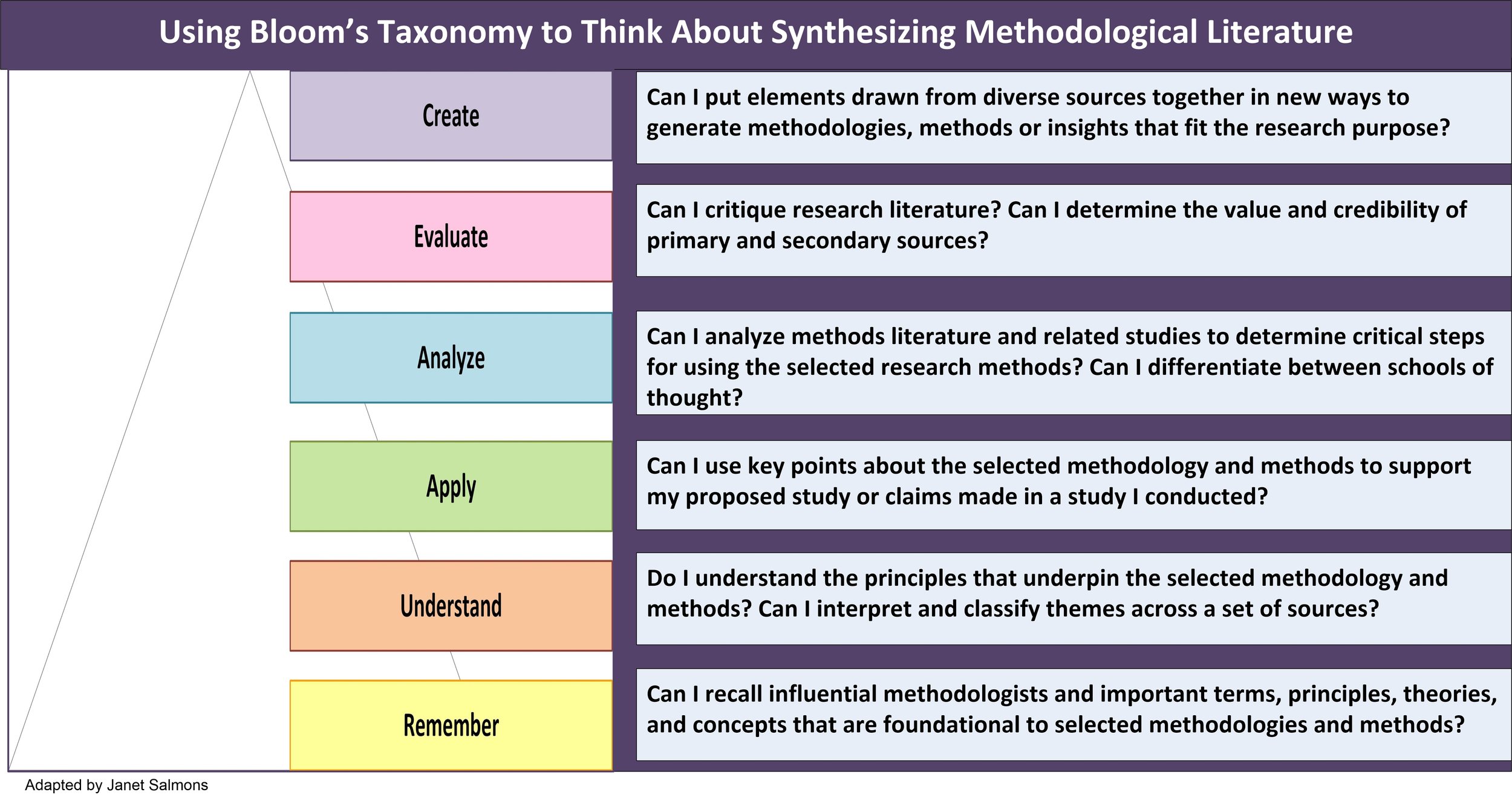Synthesizing Methodological Literature
by Janet Salmons, PhD, Research Community Manager for SAGE Methodspace.
Research design is the focus for the first quarter of 2023.
Let’s use this definition of the literature review: “a systematic syntheses of previous work around a particular topic” (Salkind, 2010, p. 726). A key word is synthesis so let’s look at ways to synthesize key points from previous work.
Some forms of writing about literature, such as the annotated bibliography, require us to dig deeply into each source. By contrast, writing a literature review means we need to draw points, findings, insights, recommendations, from across a set of sources. Sources can include previous studies of the problem we want to investigate, as well as literature about theories, methodologies and methods.
There are various types of literature reviews. Some help to ground a research proposal, dissertation or thesis. They situate the study in the discipline(s) related to the research problem, and in the methodological tradition that is used to frame the study. Others are a form of stand-alone research that draws on published literature as the source of data. (See this series of posts and interviews about review research.)
Synthesis is a Creative Process
Bloom’s Taxonomy, developed in 1956 and updated in 2001, is commonly used as a framework for developing progressively more sophisticated learning activities. It is also useful in this context. Let’s walk through the levels of thinking as they relate to synthesizing methodological literature.
We start by familiarizing ourselves with relevant research tradition(s). Who are the seminal thinkers, the respected methodologists? What are the distinguishing elements of the methodology or methods? Now we can move from simply identifying these elements to really understanding them, and seeing how they play out in the different studies you are reading. This understanding allows us to grasp the ideas, to apply them in our writing or in our research designs. We can take the next steps to analyze and evaluate research literature. These are essential skills for reviews of the literature as well as for peer reviews. We evaluate our own work too, so we can continue to refine and improve it.
Being able to understand, analyze, and evaluate methodological literature is important but we can’t stop there! Being a scholar means making an original contribution. We need to reflect on everything we’ve learned, and create a new way of thinking or practice. This is why the verb create is at the top of the Taxonomy.
You've read a lot of articles and made copious notes, now what?
At the synthesis stage, we pull together the notes we've made and try to make sense of it all. We think inductively to create a holistic explanation of the various fragments we've collected from our sources. Naturally, there are multiple ways to organize points and perspectives drawn from methods literature. Here are three:
Chronological: Trace the evolution of the methodology or method over a defined period of time. Who originated the approach, who came after them to refine or reject elements of the original thinking?
Thematic: Organize your points by themes that correspond to particular elements of the methodology or methods. For example, you could examine methodological thinking about the position of the researcher, or about ways to structure in-depth interviews.
Trend: If you are using an emerging method, you can organize points to highlight ways methodologists address social, technological, economic, or other trends that that influence the design and conduct of research. For example, you could compare and contrast approaches to field work in conflict zones, or ways to work with communities to conduct indigenous research.
Taking a thoughtful and systematic approach to methodological literature will help you focus an otherwise overwhelming process.



























The process for researching literature on research methods is somewhat different from the process used for researching literature about the topic, problem, or questions. What should we keep in mind when selecting methods literature?